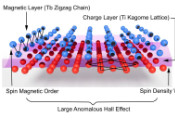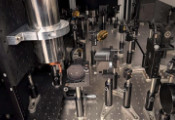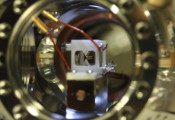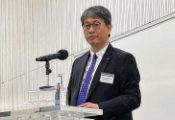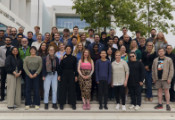Innovative Optical Memory for Future Photonics
July 04, 2025 – New research by scientists at UBC’s Blusson Quantum Matter Institute has demonstrated an innovative switching technology with potential applications in neuromorphic optical computing, artificial intelligence, and optical communications.
The study, published in Physical Review X, reports a novel method to non-volatilely switch the optical properties of the two-dimensional semiconductor molybdenum disulfide with rhombohedral stacking (3R-MoS2).
The switch leverages a phenomenon known as sliding ferroelectricity, where atomic layers in the material slide relative to each other under an applied electric field. Unlike traditional memory devices that rely on magnetic effects or charge storage, sliding ferroelectricity works by changing the stacking configuration of two atomic layers to create a physical difference that is both stable and reversible.
“Conventional optical memories, such as those used in CDs, depend on phase-change materials that heat up and therefore have much slower switching times. The mechanism reported in our study does not involve heating, so the switching energy can be reduced significantly, with both on and off switching occurring at nanosecond timescale,” said Blusson QMI investigator Ziliang Ye. “Our results show the fastest non-volatile switching ever reported for optical materials.”
“Our study also reveals interesting insights into the underlying physics. The optical switching is caused by sliding, and in particular, by so-called domain wall motion. Our measurement provides a lower bound on the intrinsic velocity of this domain wall moving ahead,” he added.
Ye said a major challenge faced by researchers was that when the atomic layers shift from one stacking arrangement (AB) to another (BA), they act like mirror images and appear identical when viewed from above. To solve this, the team designed an additional layer to create an uneven, or asymmetric, environment around the material, breaking the mirror symmetry and revealing significant optical differences.
“We came up with this idea to use an additional layer to screen the optical response of one layer. By creating this asymmetry and carefully engineering the surrounding environment to control Coulomb interactions, we could finally see a very large optical contrast between the two states,” Ye said.
The research builds on a work published by the same team earlier this year in Nature Nanotechnology, where they first discovered that the asymmetric screening can give rise to an optical contrast in multilayered 3R-MoS2 of different stacking configurations.


